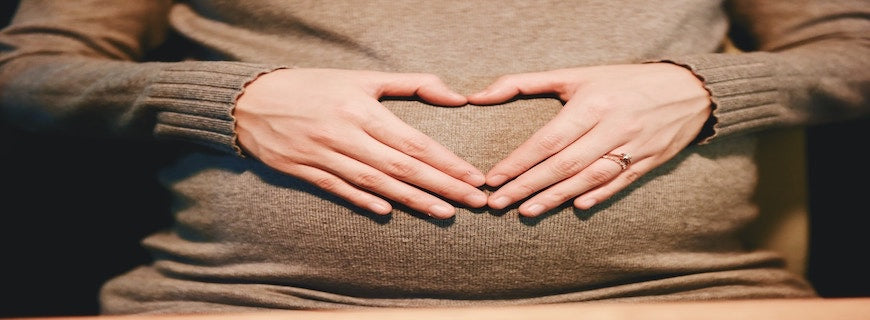Much of the weight gained during pregnancy isn’t from the baby itself. Rather, it’s from extra fluid that your body creates to cushion and nurture the baby. All this extra fluid can lead to swelling, one of the most common side effects of pregnancy.
Swelling can happen at any time of your pregnancy, but it most commonly appears at about the five-month mark, often getting worse during the final trimester.
Mild swelling is normal, but if you notice sudden swelling in your face or hands, you should contact your healthcare provider immediately, as this could be a sign of preeclampsia.
Thankfully, there are steps you can take at home to control the mild swelling that normally comes with pregnancy. Here are seven ways to combat swelling while expecting a baby, from elevating your legs to trying water aerobics.
1. Don’t sit or stand for long periods
You’re already swollen all over during pregnancy, and gravity can pull on that extra fluid and cause it to pool in your feet and lower limbs if you don’t stay mobile.
If you sit or stand all day for work, the blood, lymph and other fluids in your body will start to settle in your lower body and lead to swelling. And while you might think standing is better for you than sitting, it’s not when it comes to swelling — gravity exerts its influence no matter what.
Moving around is often the last thing you feel like doing when you are pregnant, but taking brief walking breaks throughout the day to get your body and fluids moving will lead to less swelling later on.
2. Elevate your legs
Gravity works against your circulation when you’re sitting or standing, but you can make it work with you by laying down and elevating your feet above your heart for 15 to 20 minutes. In this position, gravity will pull on the fluids that have collected in your feet and lower legs and encourage them to drain back towards your core.
However, it’s important to angle your legs in the correct position, since you can actually impede your circulation if you do it incorrectly.
Thankfully, a leg rest pillow can help you get into the right position with hardly any effort on your part, something that every mama-to-be definitely needs.
3. Avoid tight clothes
Pretty much all expectant women want to wear the loosest, comfiest clothes possible, and with good reason: Tight clothing can actually contribute to swelling and other health issues.
Stiff fabrics can cut into your skin and impede the flow of the blood and lymph systems, causing fluid backups. Instead, opt for loose, breathable clothes that allow you to move around freely, and don’t be afraid to size up.
Pregnancy is temporary, and you want to be as comfortable and healthy as possible, especially as you enter your later trimesters and the risk of swelling goes up.
4. Try compression therapy
That being said, there is one type of tight clothing that can actually combat swelling: compression garments.
Compression products are made of special fabrics that are designed to provide graduated pressure that starts strongest at your ankle or wrist and then lessens as it continues up your limbs.
Compression stockings and sleeves encourage the blood to keep flowing and reduce the risk of swelling. For your lower body specifically, you can choose maternity pantyhose that also cover your growing belly.
Many products look just like normal socks and stockings, so you can wear them with your regular wardrobe and no one will know the difference.
5. Get moving
Exercising during your pregnancy has many benefits. It helps reduce backaches, keeps your bowel regular, increases energy levels, improves posture, promotes better sleep and also improves muscle tone, strength and endurance — which can make it easier to cope with labor and to get back into shape after pregnancy.
But what you might not know is that exercise also reduces swelling because it keeps your blood, lymph and other fluids moving and discourages them from pooling. While you should avoid high-impact exercises while pregnant, low-impact exercises such as brisk walking, stationary cycling, yoga and moderate aerobics are all good choices.
Specific exercises that can help you prepare for labour while getting your blood moving, meanwhile, include pelvic tilts and squats.
6. Try water exercises
Speaking of working out, water exercises are especially beneficial for reducing swelling during pregnancy. In fact, the gentle pressure from the water acts in much the same way compression garments do.
Water gently squeezes your body, encouraging fluids to flow and decreasing swelling in the process. Water aerobics and water zumba are popular options, and some advanced gyms even offer special aqua cycling classes as well.
Check the class listings for your local gym or studio, as some locations offer water exercise classes specifically for pregnant women. These classes can be a great way to get moving, decrease swelling and meet some fellow mums-to-be.
7. Drink plenty of water
Drinking water may seem like the opposite of what you want to do when you’re swelling, especially when you already have to pee all the time because the baby is pushing on your bladder!
However, if you’re dehydrated, your body will actually retain water, which contributes to swelling. Drinking enough water and staying hydrated signals your body to move and get rid of fluids like normal, rather than retaining them as a barrier against dehydration.
In addition to drinking enough water, also watch out for spices, foods and drinks such as tea and coffee that act as natural diuretics, which cause the body to get rid of water and sodium.
Conclusion
Swelling and pregnancy often go together like newborns and cute onesies – but swelling doesn’t have to make you miserable during your pregnancy.
Follow these seven steps to manage swelling as you’re expecting, and you’ll soon appreciate the effect on your wellbeing.
This guest article was written by Kaki Zell, the Vice President and co-owner of Ames Walker. When she is not working for the family business, she enjoys running, hiking, travelling, Virginia Tech football and spending time with family and friends.




























Leave a comment